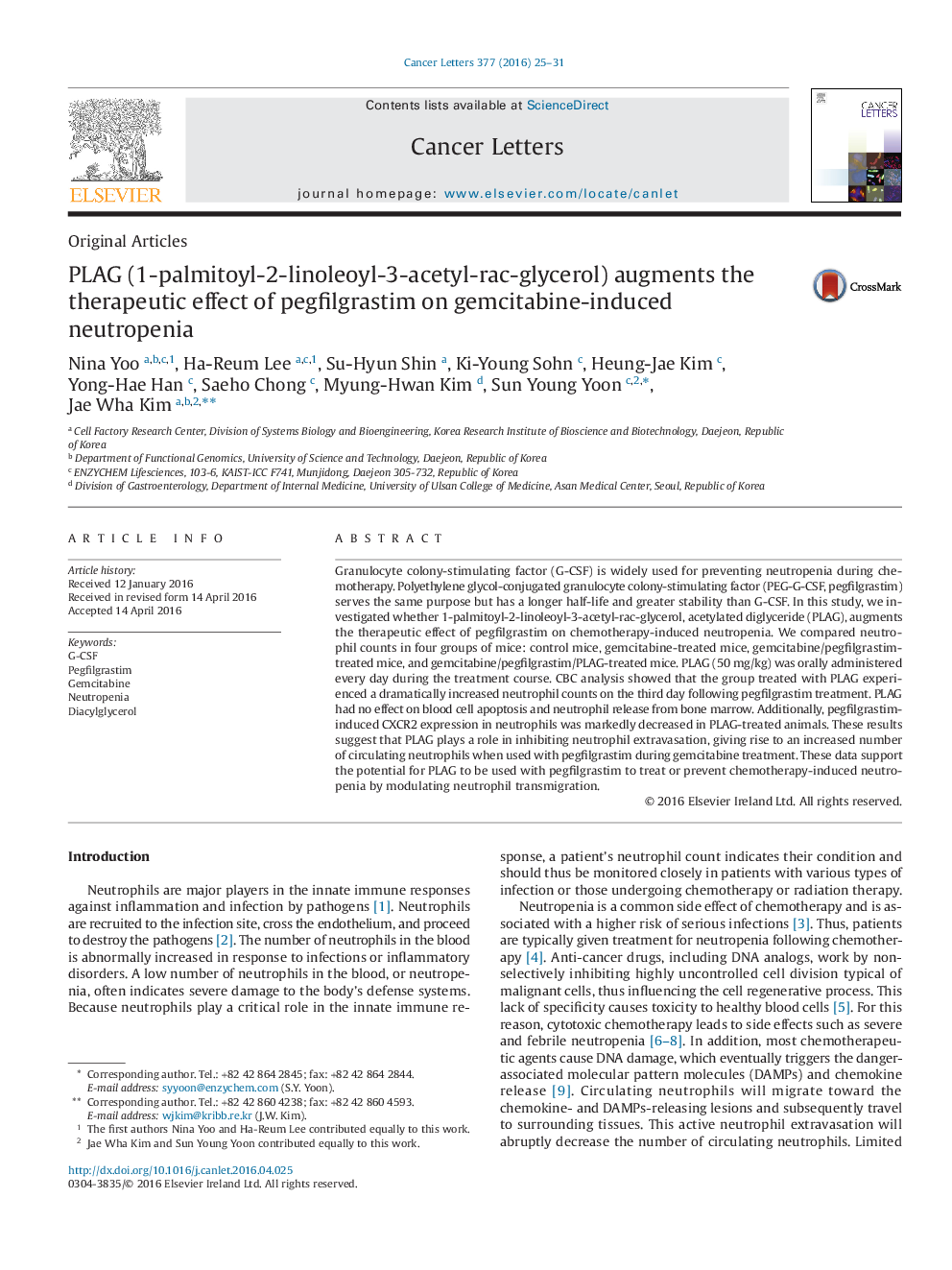| Article ID | Journal | Published Year | Pages | File Type |
|---|---|---|---|---|
| 2112317 | Cancer Letters | 2016 | 7 Pages |
•Combined PLAG and pegfilgrastim is more effective in gemcitabine-induced neutropenia than pegfilgrastim alone.•PLAG had no effect on neutrophil counts in the bone marrow or on neutrophil apoptosis.•Pegfilgrastim-induced CXCR2 expression in neutrophils was markedly decreased in the group also treated with PLAG.
Granulocyte colony-stimulating factor (G-CSF) is widely used for preventing neutropenia during chemotherapy. Polyethylene glycol-conjugated granulocyte colony-stimulating factor (PEG-G-CSF, pegfilgrastim) serves the same purpose but has a longer half-life and greater stability than G-CSF. In this study, we investigated whether 1-palmitoyl-2-linoleoyl-3-acetyl-rac-glycerol, acetylated diglyceride (PLAG), augments the therapeutic effect of pegfilgrastim on chemotherapy-induced neutropenia. We compared neutrophil counts in four groups of mice: control mice, gemcitabine-treated mice, gemcitabine/pegfilgrastim-treated mice, and gemcitabine/pegfilgrastim/PLAG-treated mice. PLAG (50 mg/kg) was orally administered every day during the treatment course. CBC analysis showed that the group treated with PLAG experienced a dramatically increased neutrophil counts on the third day following pegfilgrastim treatment. PLAG had no effect on blood cell apoptosis and neutrophil release from bone marrow. Additionally, pegfilgrastim-induced CXCR2 expression in neutrophils was markedly decreased in PLAG-treated animals. These results suggest that PLAG plays a role in inhibiting neutrophil extravasation, giving rise to an increased number of circulating neutrophils when used with pegfilgrastim during gemcitabine treatment. These data support the potential for PLAG to be used with pegfilgrastim to treat or prevent chemotherapy-induced neutropenia by modulating neutrophil transmigration.
